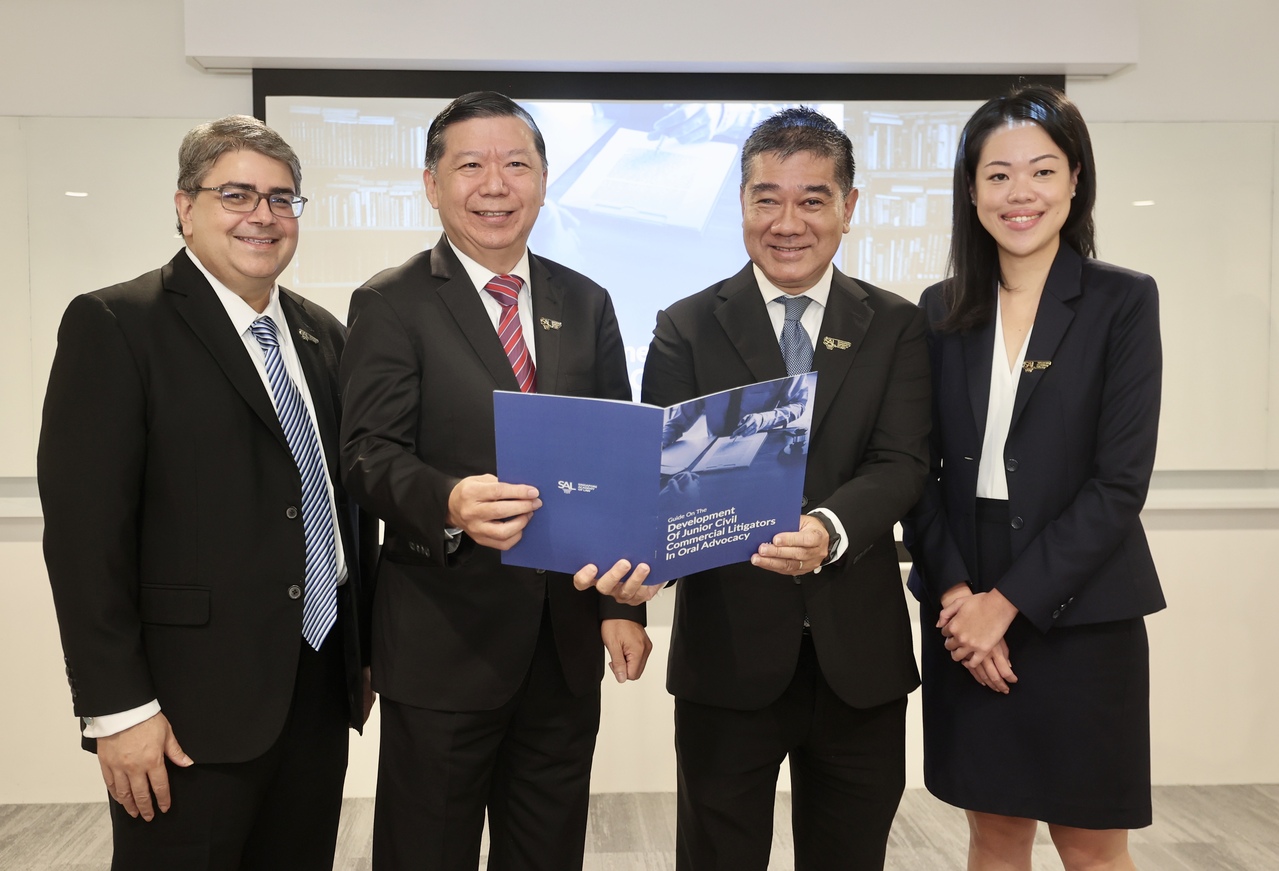New guide to help junior lawyers gauge progress in oral advocacy skills
Sign up now: Get ST's newsletters delivered to your inbox

(From left) Mr Rama Tiwari, Mr Patrick Ang, Justice Andre Maniam and Miss Monica Chong at the launch of the Guide on the Development of Junior Civil Commercial Litigators in Oral Advocacy.
PHOTO: LIANHE ZAOBAO
Follow topic:
SINGAPORE - A guide for junior lawyers charting the type of court experience they should be getting in the first seven years of their career was launched on Monday.
Developed by members of the Singapore Academy of Law (SAL) in consultation with members of the judiciary and the Law Society of Singapore, the guide is intended to ensure that young litigators will have adequate opportunities to hone their oral advocacy skills.
Oral advocacy, the skill of presenting oral arguments to the court, has been identified as an area in which the problem of a lack of opportunities for junior lawyers is most pressing.
The guide, launched by Justice Andre Maniam at SAL's premises at The Adelphi, sets out milestones that junior lawyers should seek to achieve at three different levels of their career.
For instance, by the end of the first level, or the first three years, they should have gained experience as lead counsel at procedural hearings and certain substantive hearings.
In his foreword to the guide, Chief Justice Sundaresh Menon said: "As cases grow in complexity and value, clients naturally prefer that senior lawyers have conduct of their briefs.
"This can present a problem if it results in fewer opportunities for junior counsel to take the lead, particularly since the advocate's craft is one best developed through practice and hands-on experience."
Speaking at the launch, Justice Maniam said: "Giving a junior litigator 'airtime' allows him to hone his skills, and to gain a reputation with the courts, with clients, and in the profession.
"In turn, uplifting the standards of junior litigators is good for the profession, good for clients, good for the courts, and good for Singapore as a dispute resolution hub."
The guide is tailored to civil commercial litigation, an area where the lack of opportunities is most acutely felt.
Mr Patrick Ang, managing partner of Rajah & Tann, said clients in civil litigation matters have more options among partners in various firms and are therefore unwilling to let young lawyers argue their matters in court.
Ms Monica Chong, a partner at WongPartnership, said the guide enhances transparency, as young litigators now know how they are situated relative to industry benchmarks, and empowers them to monitor their own development.
Both Mr Ang and Ms Chong contributed to the guide, which builds on other initiatives to widen opportunities for junior lawyers to represent their clients in court.
In 2018, the SAL spearheaded a pledge by 21 law firms to provide more of such opportunities.
The Supreme Court amended its practice directions to encourage senior lawyers to let clients know the benefits of allocating certain advocacy tasks to junior counsel. A general rule was also set for opening statements to be delivered by assisting counsel.
Mr Terence Yeo, 26, an associate with TSMP Law, said the firm worked "lean and sharp", which meant young lawyers like him got opportunities to conduct oral advocacy, whether through mitigation submissions or even at trial.
Mr Victor Leong, 31, counsel at Audent Chambers, said the guide was a good starting point but added that young lawyers should actively seek out such opportunities.
"You can't sit back and wait for people to hand you opportunities on a silver platter."

